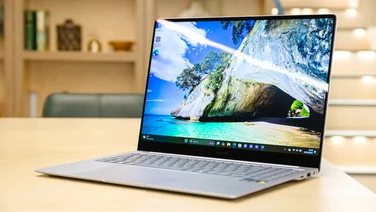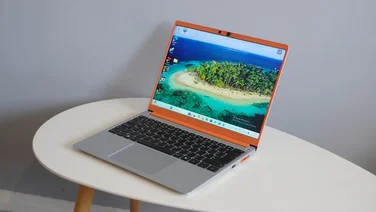To help us provide you with free impartial advice, we may earn a commission if you buy through links on our site. Learn more

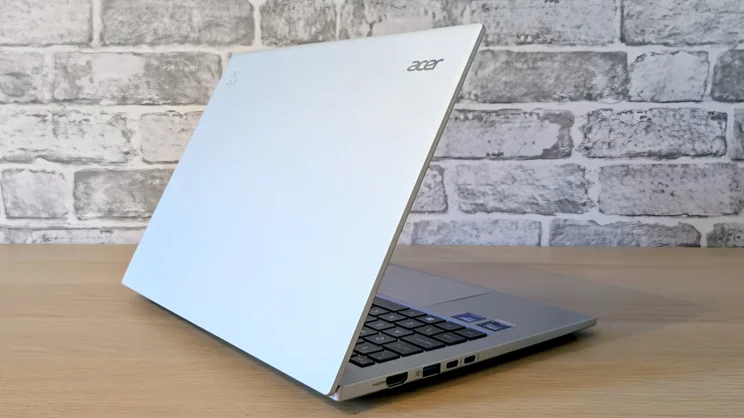
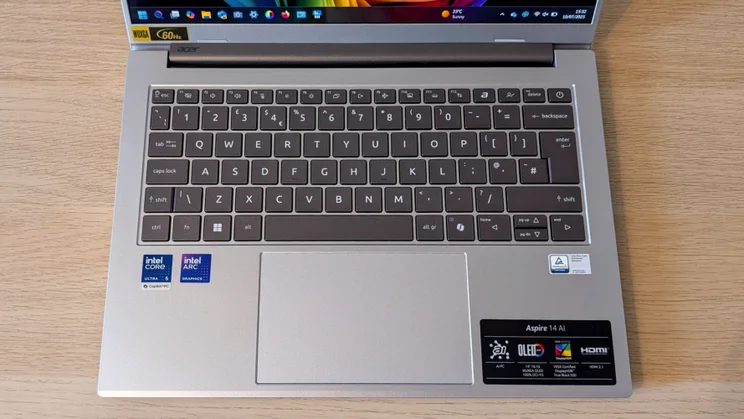
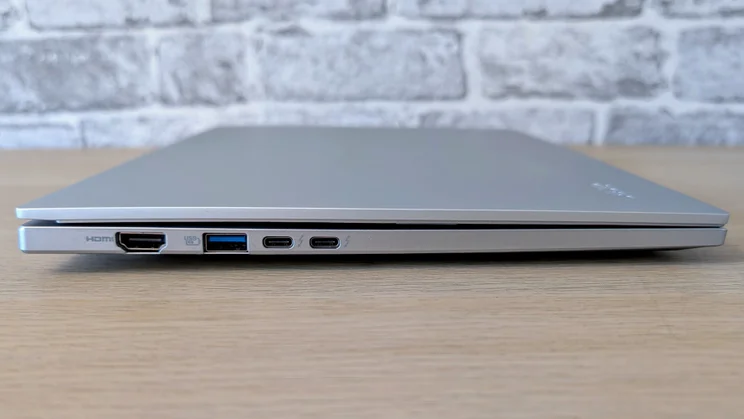
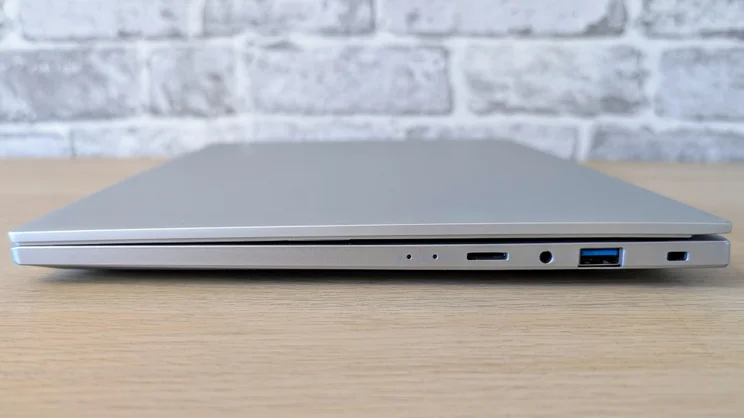
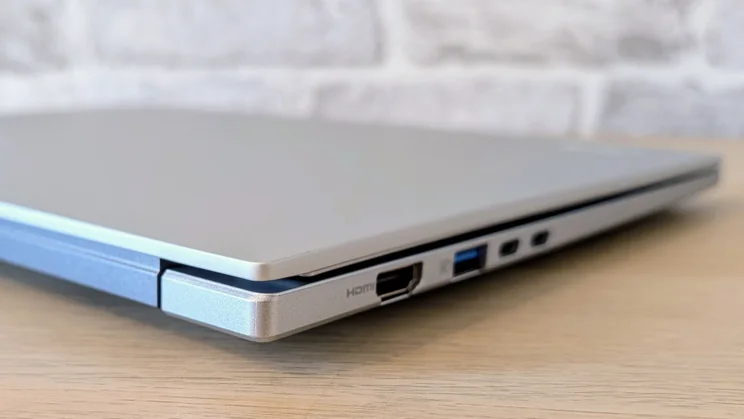
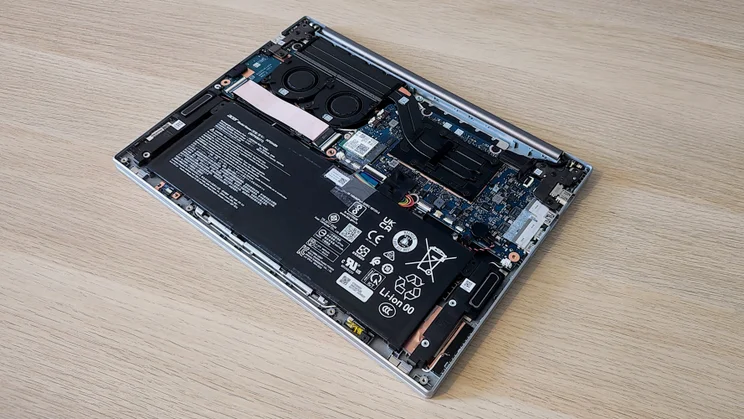
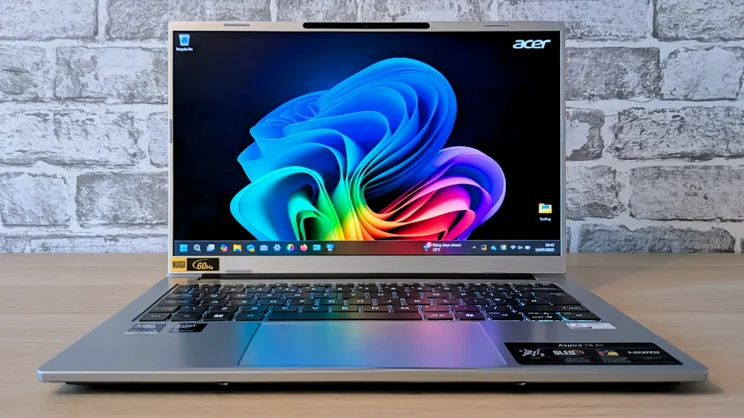
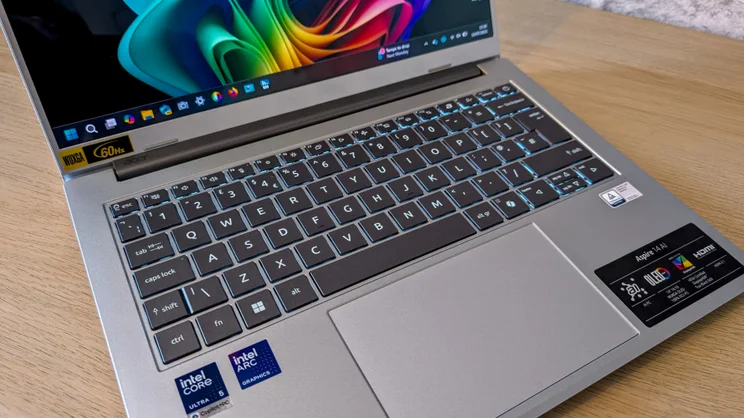

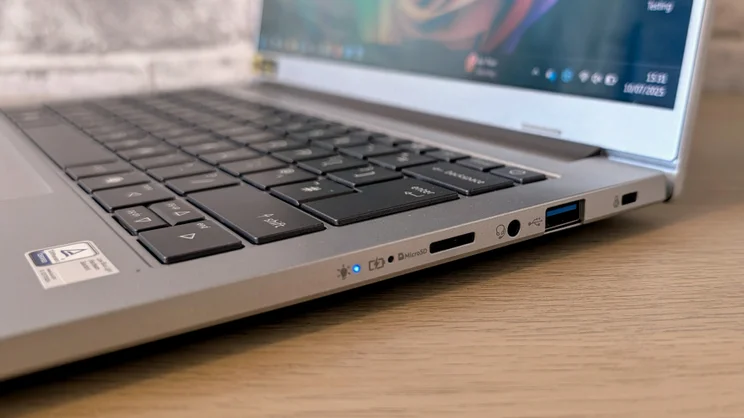
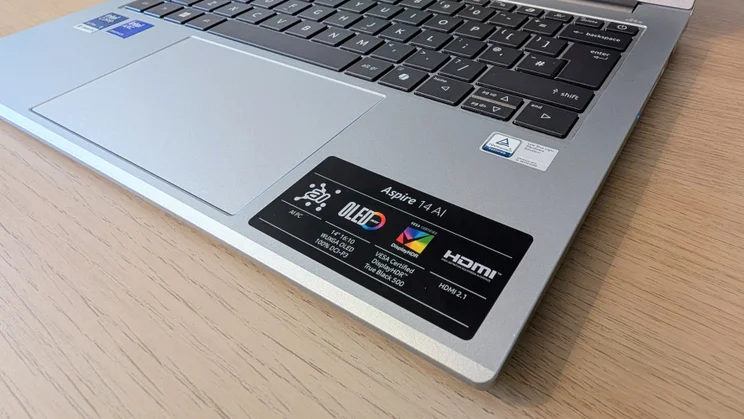
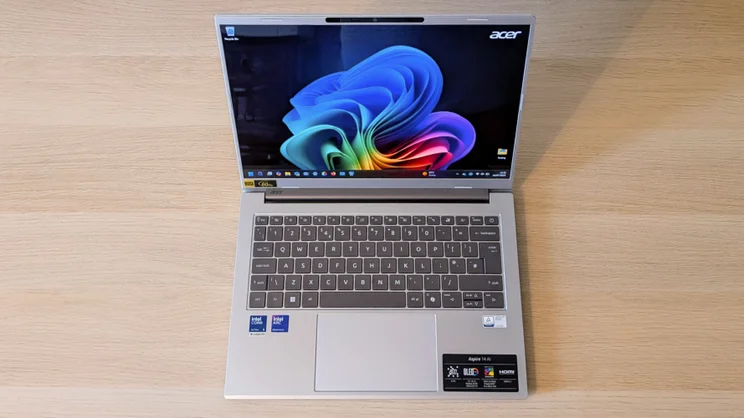
- Vibrant OLED display
- Good specification for the price
- Long battery life
- UK model lacks the Windows Hello camera
- Weak sound system
- Display refresh rate limited to 60Hz
Walking into a reseller and asking for an Acer Aspire laptop is rather like walking into a car dealer and asking for a hatchback. You need to be rather more precise about what you are after.
For the sake of clarity, what I have here is the latest generation Aspire 14 AI, featuring an Intel Core Ultra 5 226V processor, a 14in 1,920 x 1,200 OLED non-touch display and the part number A14-53M. However, the version on sale in the UK is the A14-52M.
What’s the difference? Not a whole lot: the UK model has a bog standard webcam instead of a Windows Hello-compatible IR unit for biometric login, there’s no microSD card reader and it only supports Wi-Fi 6, where the US laptop gets Wi-Fi 7. In every other respect, the two laptops are identical.
Acer Aspire 14 AI (A14-53M) review: What you need to know
Pick a 14in Acer Aspire from any recent year and you’ll find the epitome of a solid, well-priced and up-to-date compact PC. It’s a recipe that has served Acer well, but at the expense of never launching a model that has solicited the sort of slack-jawed desire that the likes of the Asus Zenbook S14 or MacBook Air can inspire.













Of course, that’s not to say that the latest Aspire 14 doesn’t have a lot going for it. The WUXGA OLED screen is better than you’ve any right to expect on a laptop costing this little; there’s a usefully wide selection of I/O ports, bang up to date chipset, and the keyboard and touchpad are hard to fault.
Price and competition
At £749, the Aspire 14 AI is quite the bargain for a laptop with an OLED screen and a Core Ultra Series 2 CPU. Most of the obvious competition will set you back £200 or more, and even the Asus Zenbook S14, which is currently on a hefty discount, costs an extra £50.
On paper, the Dell 14 Plus delivers a lot for the money with a 2.5K screen, 1TB SSD and 32GB of RAM all as standard, but the drab display and annoyingly bouncy keyboard deck knock some of the shine off. It’s worth a look if the price is right, but this is not Dell at the top of its game.













The Honor MagicBook Pro 14 is a great value compact laptop, thanks to a powerful chipset and a glorious 120Hz 3.2K OLED touchscreen. The Core Ultra 9 285H CPU lacks the powerful Lunar Lake NPU, though, so you have to forgo some of Microsoft’s Copilot+ AI goodies like Recall, but other than that, it’s pretty faultless.
One of the first Core Ultra S2 laptops we tested, the Asus Zenbook S14, is still a benchmark device. It’s a design classic, beautiful to behold and lovely to touch. The 2.8K 120Hz OLED touchscreen is a match for the Honor MagicBook Pro 14, and that’s saying something. Currently, you can buy the S14 for a mere £799.













While it no longer dominates the class, Apple’s M4 MacBook Air is still a self-recommending buy and a very impressive bit of kit. The display is top quality, as is the keyboard and sound system. Battery life, however, is merely average by 2025 standards.
It’s difficult to overcome the feeling that Microsoft’s new Surface Laptop 13 is rather overpriced (at £799 rather than £899 it would demolish the opposition), but there’s no denying the Apple-like purity of the design and software/hardware integration. The battery life is superb, and the keyboard and trackpad are among the very best.
Design and features
The new Aspire 14 has an aluminium casing made from a mix of aluminium and plastic. The result feels pretty solid, though there is rather more flex in the lid than you get with a Zenbook S14 or a MacBook Air.
At 1.24kg the new Aspire is the same weight as a 13.6in MacBook Air, though at 15.9mm it’s a little thicker than the skinny 11.3mm Apple machine. Usefully, the screen still folds back to 180 degrees, perfect for sofa slouching with your knees up.
Physically, the new Aspire looks a lot like the old model; in fact, the only changes I could see were a redesign of the fan exhaust slots at the rear and the removal of the word Aspire from the touchpad. As far as laptop designs go, it’s perfectly decent and workmanlike, but I would like to see Acer being a bit more aesthetically adventurous.













Acer can’t be faulted when it comes to the number and type of I/O ports, either. The laptop has with two Thunderbolt 4 ports on the left, along with an HDMI 2.1 video output and a 5Gbps USB-A port, while on the on the right edge, are a second USB-A port, a 3.5mm audio jack and a Kensington lock slot. You’ll also see a microSD memory card slot in the photos attached here, but as a reminder this only comes on the US A14-53M model.
As always, I wish the Thunderbolt 4 ports were split one per side so you could choose which side to charge from and so that all the video outputs were not all clustered together, but this is a design foible of many compact laptops and so no reason to kick the new Aspire too hard.
Keyboard, touchpad and webcam
The Aspire’s keyboard deck is not the most solid I’ve encountered recently, but what bounce there is isn’t anything like as noticeable in general use as it is on the Dell 14 Plus.
The keys themselves need slightly more pressure to activate than usual, but as I like a firmer typing action, I’m not complaining. Key travel is a standard 1.7mm, and the end-stop is well damped. There’s nothing untoward in the layout either, and the keycap graphics are simple and legible with or without the two-stage white backlight engaged.













As for the touchpad, that’s pretty standard, too. It measures 125 x 80mm, the plastic surface is perfectly smooth and it’s responsive to swipes and taps. The click action is well-damped with no sense of looseness, and it doesn’t make much noise, so using it in a quiet environment like a library shouldn’t solicit any hard stares from those around you.
The webcam didn’t produce the sharpest or brightest video I’ve ever seen from a 1080p unit, and having bold colours in the view seemed to throw the colour balance off until my face returned to centre-stage.
That said, I’ve seen a lot worse at this price, and you do get a manual privacy shutter plus Windows Hello facial recognition (again, A14-53M models only).
Display and audio quality
Given the price, the display impresses. Granted, it may only be a 1,920 x 1,200 affair with a 60Hz refresh rate, and there’s no touch interface, but it is an OLED rather than an IPS panel, and that means you get wide gamut coverage and HDR support, neither of which is given at this price point.
In SDR mode (standard dynamic range), peak brightness hit a relatively modest 392cd/m2, but in HDR, that jumped to a more noteworthy 631cd/m2, more than sufficient to earn it the VESA DisplayHDR True Black 500 sticker on the keyboard deck.













The display supports a maximum native colour reproduction of 165% sRGB, which is equivalent to 117% DCI-P3 and 113.8% AdobeRGB. That is as wide as wide gamut gets.
Acer doesn’t bundle any colour profile swapping software, but the display recorded a perfectly acceptable Delta E average error of 1.9 vs the DisplayP3 profile which means images and videos looks fully saturated and naturally colourful.













The two-speaker sound system doesn’t want for volume, either, registering 77dBA against a pink noise source at a 1m distance, but the soundscape is very bright and forward and also lacks much in the way of bass.
The result is a rather fatiguing listening experience when music is playing, although the tightly focused and punchy sound does much better in conference calls or when listening to the dialogue in films.
Performance and battery life
The Intel Core Ultra 5 226V CPU inside the Acer is the runt of the Core Ultra S2 litter, but it still has eight cores, four of which are Performance cores and can run at up to 4.5GHz.













The Intel Arc 130V integrated GPU and NPU (neural processing unit) are also less potent than their equivalent Core Ultra 7 counterparts. The GPU comes with seven rather than eight Xe cores, while the NPU is restricted to 40 rather than 47 TOPS (trillions of operations per second). As my review sample was an entry-level machine, it only came with 16GB of LPDDR5X RAM and a 512GB Samsung SSD.
In the real world, the Aspire proved more potent than the Dell 14 Plus and M4 MacBook Air in our 4K multimedia benchmark, scoring 268 points to 249 and 247, respectively. That just goes to show you shouldn’t put too much stock in on-paper specifications.
The Arc 130V isn’t as powerful as the 140V GPU on the Core Ultra 7, but the difference is so small as to be irrelevant. The new Aspire ran the SPECviewperf 3dsmax 3D modelling benchmark at an average 23.8fps, which is only two or three frames per second slower than the 140V and a good 10fps faster than an Iris Xe GPU could manage.
It’s also pleasing to see the Aspire performing well under stress-testing: when the CPU and GPU were running at 100% utilisation, more often than not there was with very little audible fan noise. The Samsung SSD was also quick, delivering average sequential read and write speeds of 4,012MB/sec and 2,569MB/sec, respectively, putting the new Aspire in second place behind the Honor MateBook Pro 14 in my comparator group.
Finally, It’s a sign of how much expectations have changed when it comes to battery life that a run time of 18hrs 30mins is now considered good but not exceptional.
That puts this new Acer in second place behind the Microsoft Surface Laptop 13 (which achieved an epic near-24 hours), but a solid two and a half hours ahead of one-time king of battery life – the MacBook Air.
Acer Aspire 14 AI review: Verdict
Acer’s latest 14in Aspire has a lot going for it. The price is right, the display is very impressive, performance is strong and, thanks to a wide selection of ports and long battery life, it’s an eminently practical laptop to use and live with.
The drawbacks are annoyingly typical for Acer’s cheaper compact laptops, namely a sub-par sound system and a design that’s a little humdrum, and bear in mind that you can pick up an M4 MacBook Pro for only £100 more.
But if you really can’t stretch to any of its rivals and you can put up with its (fairly minor) foibles, this laptop is well worth considering – if not aspiring to.
Acer Aspire 14 AI (A14-53M) specifications
| Processor | Intel Core Ultra 5 226V |
| RAM | 16GB |
| Additional memory slots | No |
| Max. memory | 16GB |
| Graphics adapter | Intel Arc Graphics 130V |
| Graphics memory | Shared |
| Storage | 512GB |
| Screen size (in) | 14 |
| Screen resolution | 1,920 x 1,200 |
| Pixel density (PPI) | 162 |
| Screen type | OLED 60Hz |
| Touchscreen | No |
| Pointing devices | Touchpad |
| Optical drive | No |
| Memory card slot | Yes |
| 3.5mm audio jack | Yes |
| Graphics outputs | USB-C DP AltMode x 2 HDMI 2.1 x 1 |
| Other ports | 2 x Thunderbolt 4, 2 x USB-A 3.2 Gen 1 |
| Web Cam | 1080p |
| Speakers | Stereo |
| Wi-Fi | Wi-Fi 7 |
| Bluetooth | Bluetooth 5.4 |
| NFC | No |
| Dimensions, mm (WDH) | 312 x 226 x 16 |
| Weight (kg) – with keyboard where applicable | 1.24 |
| Battery size (Wh) | 65 |


